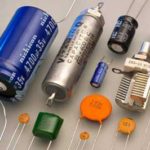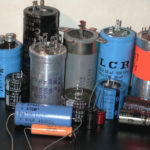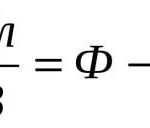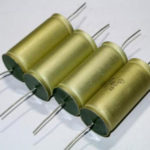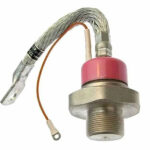The elemental base for the design of electronic devices is becoming more complicated. Devices are combined into integrated circuits with a given functionality and program control. But the development is based on basic devices: capacitors, resistors, diodes and transistors.
Content
What is a capacitor
A device that stores electrical energy in the form of electrical charges is called a capacitor.
The amount of electricity or electric charge in physics is measured in coulombs (C). The capacitance is measured in farads (F).
A solitary conductor with an electrical capacity of 1 farad is a metal ball with a radius equal to 13 radii of the Sun.Therefore, the capacitor includes at least 2 conductors, which are separated by a dielectric. In simple designs of the device - paper.
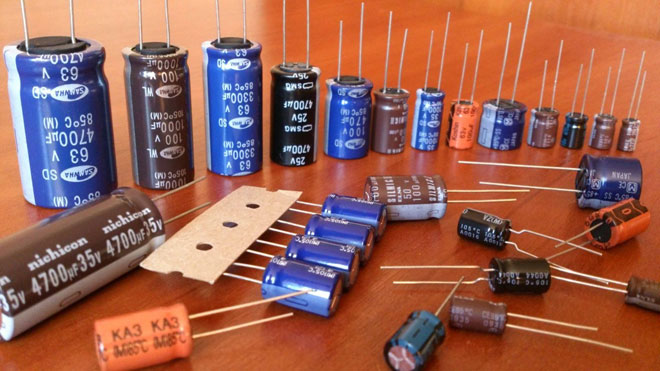
The operation of a capacitor in a DC circuit is carried out when the power is turned on and off. Only at transitional moments does the potential on the plates change.
The capacitor in the AC circuit is recharged at a frequency equal to the frequency of the power supply voltage. As a result of continuous charges and discharges, current flows through the element. Higher frequency - the device recharges faster.
The resistance of a circuit with a capacitor depends on the frequency of the current. At zero DC frequency, the resistance value tends to infinity. As the AC frequency increases, the resistance decreases.
Where are capacitors used?
The operation of electronic, radio engineering and electrical devices is impossible without capacitors.
In electrical engineering, they are used to shift phases when starting induction motors. Without phase shift, a three-phase asynchronous motor in a variable single-phase network does not function.
Capacitors with a capacity of several farads - ionistors, are used in electric vehicles as engine power sources.
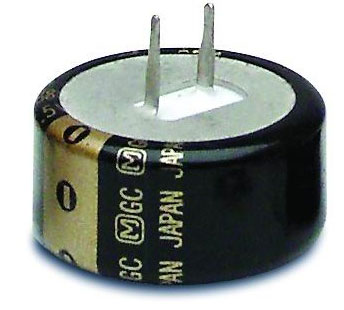
To understand why a capacitor is needed, you need to know that 10-12% of measuring devices operate on the principle of changing electrical capacitance when the parameters of the external environment change. The reaction capacitance of special devices is used for:
- registration of weak movements through an increase or decrease in the distance between the plates;
- determination of humidity by fixing changes in the resistance of the dielectric;
- measurement of the liquid level, which changes the capacity of the element when filled.
It is difficult to imagine how automation and relay protection are designed without capacitors. Some protection logics take into account the multiplicity of the device recharge.
Capacitive elements are used in circuits of mobile communication devices, radio and television equipment. Capacitors are used in:
- amplifiers of high and low frequencies;
- power supplies;
- frequency filters;
- sound amplifiers;
- processors and other microcircuits.

It is easy to find the answer to the question of what a capacitor is for, if you look at the electrical circuits of electronic devices.
The principle of operation of the capacitor
In a DC circuit, positive charges are collected on one plate, and negative charges are collected on the other. Due to mutual attraction, the particles are held in the device, and the dielectric between them does not allow to connect. The thinner the dielectric, the stronger the charges are bound.
The capacitor takes the amount of electricity needed to fill the container, and the current stops.
With a constant voltage in the circuit, the element retains a charge until the power is turned off. Then it is discharged through the loads in the circuit.
Alternating current flows through a capacitor in a different way. The first ¼ of the oscillation period is the moment the device is charged. The amplitude of the charging current decreases exponentially, and by the end of the quarter it drops to zero. EMF at this moment reaches the amplitude.
In the second ¼ period, the EMF drops and the cell begins to discharge. The decrease in EMF is initially small and the discharge current, respectively, too. It grows according to the same exponential dependence. By the end of the period, the EMF is zero, the current is equal to the amplitude value.
In the third ¼ of the oscillation period, the EMF changes direction, passes through zero and increases.The charge sign on the plates is reversed. The current decreases in magnitude and retains direction. At this point, the electric current leads the voltage by 90° in phase.
In inductors, the opposite happens: voltage leads current. This property comes first when choosing which circuit to use in the circuit: RC or RL.
At the end of the cycle, at the last ¼ oscillation, the EMF drops to zero, and the current reaches its peak value.
"Capacity" is discharged and charged 2 times per period and conducts alternating current.
This is a theoretical description of processes. To understand how the element in the circuit works directly in the device, the inductive and capacitive resistance of the circuit, the parameters of the other participants are calculated, and the influence of the external environment is taken into account.
Main characteristics and properties
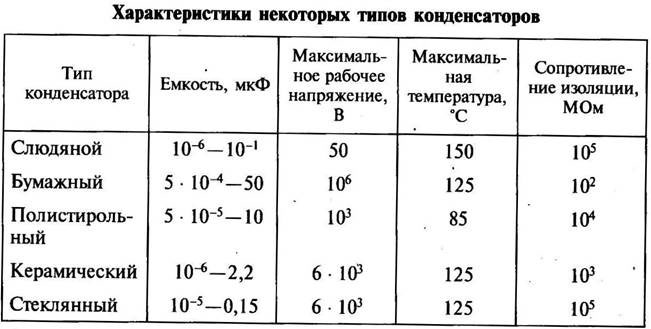
Capacitor parameters that are used to create and repair electronic devices include:
- Capacity - C. Determines the amount of charge that the device holds. The value of the nominal capacity is indicated on the case. To create the required values, the elements are included in the circuit in parallel or in series. The operational values do not match the calculated ones.
- Resonant frequency - fр. If the frequency of the current is greater than the resonant one, then the inductive properties of the element appear. This makes the job difficult. To provide the calculated power in the circuit, it is reasonable to use a capacitor at frequencies less than resonant values.
- Rated voltage - Un. To prevent breakdown of the element, the operating voltage is set less than the nominal voltage. The parameter is indicated on the capacitor case.
- Polarity. If the connection is incorrect, breakdown and failure will occur.
- Electrical insulation resistance - Rd. Defines the device leakage current. In devices, parts are located close to each other. At high leakage current, parasitic connections in the circuits are possible. This leads to malfunctions. The leakage current degrades the capacitive properties of the element.
- Temperature coefficient - TKE. The value determines how the capacitance of the device changes with fluctuations in the temperature of the environment. The parameter is used when developing devices for operation in severe climatic conditions.
- parasitic piezoelectric effect. Some types of capacitors, when deformed, create noise in devices.
Types and types of capacitors
Capacitive elements are classified according to the type of dielectric used in the design.
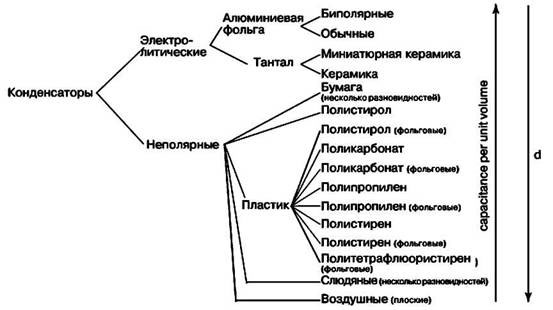
Paper and metal-paper capacitors
The elements are used in circuits with constant or slightly pulsating voltage. The simplicity of the design results in a 10-25% lower stability of performance and increased losses.
In paper capacitors, the aluminum foil plates separate the paper. The assemblies are twisted and placed in a case in the form of a cylinder or a rectangular parallelepiped.
Devices operate at temperatures of -60 ... + 125 ° C, with a rated voltage of low-voltage devices up to 1600 V, high-voltage devices - above 1600 V and a capacity of up to tens of microfarads.
In metal-paper devices, instead of foil, a thin layer of metal is applied to dielectric paper. This helps to produce smaller elements. With minor breakdowns, self-healing of the dielectric is possible. Metal-paper elements are inferior to paper elements in terms of insulation resistance.

Electrolytic Capacitors
The design of the products resembles paper ones. But in the manufacture of electrolytic cells, paper is impregnated with metal oxides.
In products with an electrolyte without paper, the oxide is deposited on a metal electrode. Metal oxides have one-sided conductivity, which makes the device polar.
In some models of electrolytic cells, the plates are made with grooves that increase the surface area of the electrode. The gaps in the space between the plates are eliminated by flooding with electrolyte. This improves the capacitive properties of the product.
A large capacity of electrolytic devices - hundreds of microfarads - is used in filters to smooth out voltage ripples.
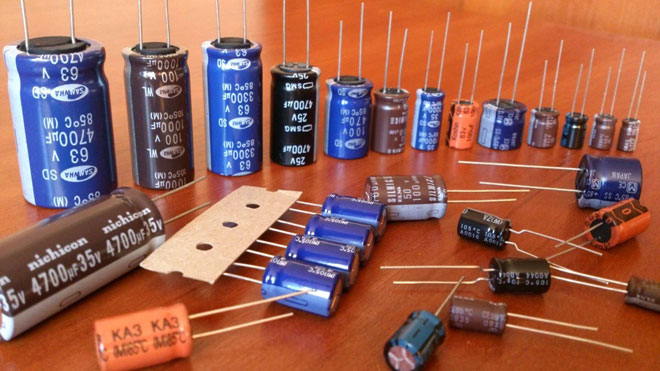
Aluminum electrolytic
In devices of this type, the anode lining is made of aluminum foil. The surface is coated with metal oxide - a dielectric. The cathode lining is a solid or liquid electrolyte, which is selected so that the oxide layer on the foil is restored during operation. Self-healing dielectric prolongs the life of the element.
Capacitors of this design require polarity. When turned on again, it will break the case.
Devices, inside which are located anti-sequential polar assemblies, are used in 2 directions. The capacitance of aluminum electrolytic cells reaches several thousand microfarads.
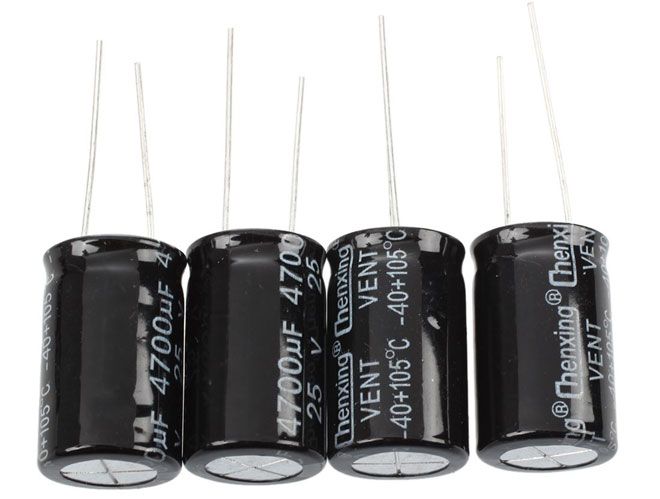
Tantalum electrolytic
The anode electrode of such devices is made from a porous structure obtained by heating tantalum powder to +2000°C. The material looks like a sponge. Porosity increases the surface area.
Using electrochemical oxidation, a layer of tantalum pentoxide up to 100 nanometers thick is applied to the anode. A solid dielectric is made from manganese dioxide.The finished structure is pressed into a compound - a special resin.
Tantalum products are used at current frequencies above 100 kHz. Capacitance is created up to hundreds of microfarads, at an operating voltage of up to 75 V.
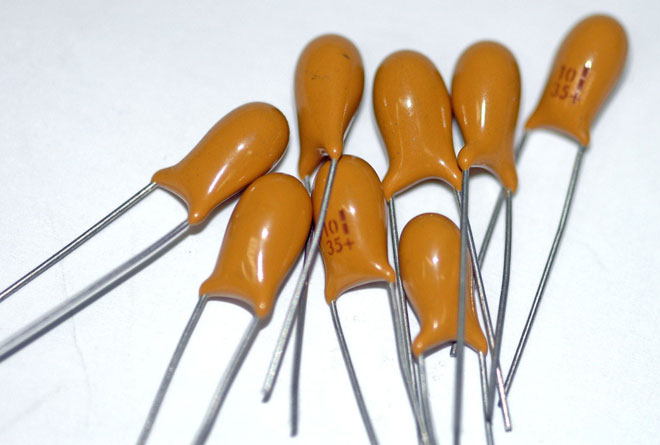
Polymer
Capacitors use an electrolyte made of solid polymers, which provides a number of advantages:
- the service life is increased up to 50 thousand hours;
- parameters are saved during heating;
- the range of permissible current ripples is expanded;
- the resistance of the plates and leads does not shunt the capacitance.
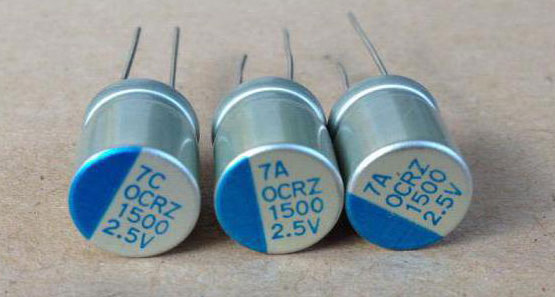
Film
The dielectric in these models is a film of Teflon, polyester, fluoroplastic or polypropylene.
Covers - foil or metal deposition on the film. The design is used to create multilayer assemblies with increased surface area.
Film capacitors with miniature sizes have a capacitance of hundreds of microfarads. Depending on the placement of the layers and the conclusions of the contacts, axial or radial shapes of the products are made.
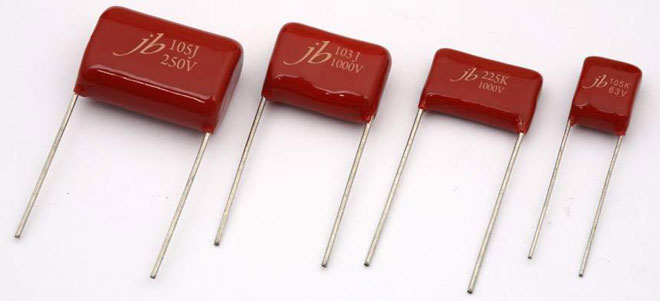
In some models, the rated voltage is 2 kV and higher.
What is the difference between polar and non-polar
Non-polar allow the inclusion of capacitors in the circuit without regard to the direction of the current. The elements are used in filters of variable power supplies, high-frequency amplifiers.
Polar products are connected in accordance with the marking. If you turn it on in the opposite direction, the device will fail or will not work normally.
Polar and non-polar capacitors of large and small capacities differ in the design of the dielectric. In electrolytic capacitors, if the oxide is applied to 1 electrode or 1 side of paper, film, then the element will be polar.
Models of non-polar electrolytic capacitors, in the designs of which the metal oxide was deposited symmetrically on both surfaces of the dielectric, are included in alternating current circuits.
For polar ones, there is a marking of a positive or negative electrode on the body.
What determines the capacitance of a capacitor
The main function and role of a capacitor in a circuit is to accumulate charges, and an additional one is to prevent leakage.
The value of the capacitance of the capacitor is directly proportional to the dielectric constant of the medium and the area of the plates, and inversely proportional to the distance between the electrodes. There are 2 contradictions:
- To increase the capacitance, the electrodes are needed as thick, wider and longer as possible. In this case, the dimensions of the device cannot be increased.
- To keep the charges and provide the desired force of attraction, the distance between the plates is made minimal. In this case, the breakdown current cannot be reduced.
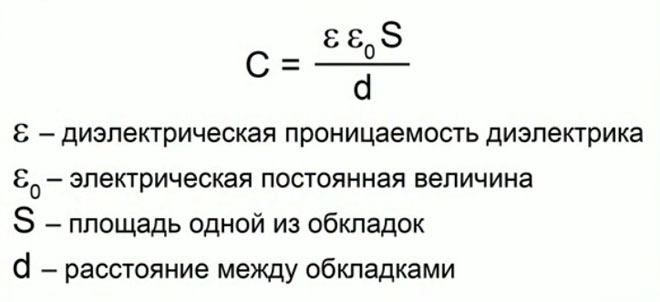
To resolve conflicts, developers use:
- multilayer constructions of a pair of dielectric and electrode;
- porous anode structures;
- replacing paper with oxides and electrolytes;
- parallel connection of elements;
- filling free space with substances with increased dielectric constant.
Capacitors are getting smaller and better with every new invention.
Similar articles:
